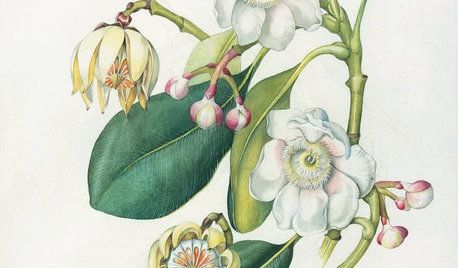I am totaly new to pollinating and hibridizing so I thought I would have a go with what was available at the time. With my collection, Billbergia are the ones in flower at the moment along with an Aechmea and Canistropsis.
My first attempt was with B.macrocalyx. I'm not sure if these set seed by themselves in Australia so I thought a little help would be in need. The inflorescence didn't totaly die off in a week after flowering as is usual for Billbergia so I thought fruit must be on the way. But unfortunatly while at work a bird or some creature broke the inflorescence.
{{gwi:475326}}
Not one to give up, next I tried B.'Hoelscheriana'. Well I think it is. Please correct me if I'm wrong here.
{{gwi:475329}}
A few weeks later after flowering. Is this what they look like when pollination has been succesful?
{{gwi:475332}}
The Billy's are coming thick and fast. I'm not sure what these are.
{{gwi:475334}}
{{gwi:475336}}
On the first of these last two I swapped pollen from Ae.gamosepala. I removed the stamens first as you can see in the photo
{{gwi:475338}}
On the Ae.gamosepala I just shoved a pile of Billy pollen on and hoped for the best.
{{gwi:475340}}
On the last of the Billys I took the first and pollinated the second and took some Canistropsis billbergioides pollen and did a swap on each.
{{gwi:475342}}
On another Billy front this B.pyramidalis var. striate. is turning into a 'Gloria'. The last 4 leaves are all yellow. There is a flower down the throut of this.
{{gwi:475344}}
One last billy for now. Any one know what this is. It's tiny.
{{gwi:475346}}
Finaly a bit of winter colour to brighten things up.
Ae. mexicana, Androlepis and Bromelia serra
{{gwi:475348}}
Cheers
Brod



rickta66
bromadams
Related Professionals
Arlington Landscape Architects & Landscape Designers · Danbury Landscape Architects & Landscape Designers · Biloxi Landscape Contractors · Cincinnati Landscape Contractors · Fort Worth Landscape Contractors · La Mirada Landscape Contractors · Panama City Beach Landscape Contractors · Sun City Center Landscape Contractors · Thonotosassa Landscape Contractors · Waltham Landscape Contractors · Palos Hills Landscape Contractors · Oregon City Fence Contractors · Fort Worth Siding & Exteriors · Panama City Siding & Exteriors · Weymouth Siding & ExteriorsbrodklopOriginal Author
bromadams
splinter1804
brodklopOriginal Author
LisaCLV
brodklopOriginal Author
rickta66
bromadams
brodklopOriginal Author
dan2805
LisaCLV
bromadams